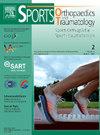Das Hüftgelenk in der Kindersportorthopädie: Besonderheiten und Beachtenswertes für Betreuende im Nachwuchssport
Q4 Health Professions
引用次数: 0
Abstract
Es ist die immanente Aufgabe der Kindersportorthopädie Überlastungen und Folgeschäden im Rahmen sportlicher Aktivität am noch wachsenden Bewegungsapparat zu erkennen und zu verhindern. Als integrativer Gelenkbestandteil des Beckenrings, seiner Nähe zum Körperschwerpunkt und der hohen Prävalenz für Wachstumsstörungen (Dysplasie, Epiphysiolysis capitis femoris (ECF), femoro-acetabuläres Impingement (FAI), Morbus Perthes) ist das Hüftgelenk das am stärksten belastete Gelenk im Sport und prädisponiert für gelenknahe Avulsionsverletzungen und die Ausbildung manifester Präarthrosen. Schmerzen sind dabei ein Frühwarnsignal für Überlastungen, eine Abklärung im Kindes- und Jugendalter daher obligat. Elementar für eine suffiziente Betreuung ist das Wissen um den Einfluss und die Dosis der sportlichen Belastbarkeit bei alterstypischen Wachstumsstörungen und Sportverletzungen.
It is the inherent task of paediatric sports orthopaedics to recognise and prevent overloading and consequential damage to the still growing musculoskeletal system during sporting activity. As an integral joint component of the pelvic ring, its proximity to the body’s centre of gravity and the high prevalence of growth disorders (dysplasia, epiphysiolysis capitis femoris (ECF), femoroacetabular impingement (FAI), Perthes’ disease), the hip joint is the most heavily loaded joint in sport and predisposes to avulsion injuries close to the joint and the development of manifest pre-arthrosis. Pain is an early warning sign of overloading, and clarification in childhood and adolescence is therefore essential. Knowledge of the influence and dose of sporting resilience in age-typical growth disorders and sports injuries is essential for adequate care.
儿童和青少年体育:儿童和青少年体育的特点。
儿童运动骨科医生的内在任务是识别和预防在体育活动中对日益增长的肌肉骨骼系统的过度负荷和相应的损害。作为包容性Gelenkbestandteil Beckenrings在他附近岸边Körperschwerpunkt大量普遍性发育不良(Dysplasie Epiphysiolysis capitis femoris (ECF) femoro-acetabuläres Impingement(你),克隆Perthes) Hüftgelenk是体育运动中最易加重了关节和行为gelenknahe Avulsionsverletzungen和教育经历manifester Präarthrosen .疼痛是过度劳累的早期预警信号,因此必须在儿童和青少年时期进行澄清。一个重要的因素是了解运动耐力对典型的老年生长障碍和运动损伤的影响和剂量。它是儿科运动骨科的内在任务,识别和防止在运动活动中对仍在生长的肌肉骨骼系统的超负荷和相应的损害。《As寻求integral component pelvic戒指,便签proximity to the身体重力的中心and the high prevalence of增长disorders (dysplasia epiphysiolysis capitis femoris (ECF) femoroacetabular impingement(你),设计师Perthes disease)、协和大麻is the苹果汁heavily loaded大麻在体育和predisposes去avulsion injuries接近。《大麻and the题为“环境声明pre-arthrosis .疼痛是超负荷的早期预警信号,因此在儿童和青少年时期的澄清是必不可少的。我们的目标是为我们的客户提供最好的产品和服务,以满足他们的需求。
本文章由计算机程序翻译,如有差异,请以英文原文为准。
求助全文
约1分钟内获得全文
求助全文
来源期刊

Sports Orthopaedics and Traumatology
Health Professions-Physical Therapy, Sports Therapy and Rehabilitation
CiteScore
0.70
自引率
0.00%
发文量
145
审稿时长
43 days
 求助内容:
求助内容: 应助结果提醒方式:
应助结果提醒方式:


